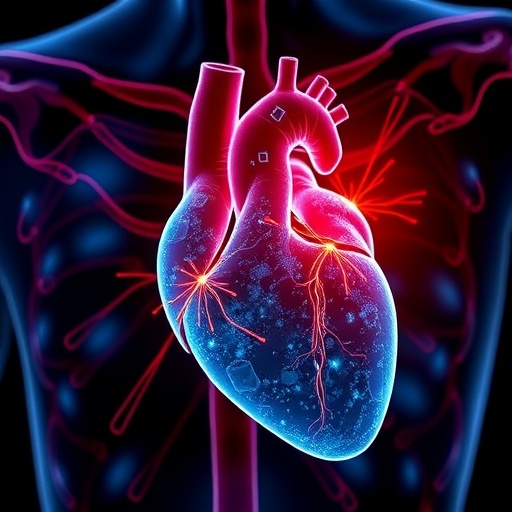PHOENIX — In a groundbreaking advancement that could revolutionize the treatment of heart failure, researchers at Mayo Clinic have unveiled a pioneering technique to repair damaged hearts without the trauma of open-heart surgery. This innovative method leverages lab-grown cardiac tissue derived from reprogrammed adult stem cells and delivers it through a minimally invasive procedure, offering new hope for patients with severe heart conditions who are often too fragile for conventional surgery.
Heart failure, especially when caused by the aftermath of a myocardial infarction, presents an immense clinical challenge since the adult human heart has limited regenerative capacity. When cardiac cells suffer oxygen deprivation during a heart attack, the resultant cell death triggers scar formation rather than regeneration, weakening the heart’s pumping efficiency. Restoring lost contractile tissue has long been an elusive goal, yet researchers have now engineered a method that may bring this vision closer to reality.
The heart tissue patch at the core of this breakthrough is crafted using induced pluripotent stem cells (iPSCs), which are adult cells reprogrammed to regain their developmental versatility. These iPSCs can then be coaxed to differentiate into various cardiac lineages, including muscle cells, vascular endothelial cells, and fibroblasts. By combining these cell types in a specialized scaffold, the team has recreated a living, functional piece of heart muscle capable of integration with the host organ.
A key innovation is the substrate used to house these cells; a flexible, paper-thin patch composed of nano- and microfibers coated with gelatin provides a biodegradable scaffold that mimics the extracellular matrix. This hybrid scaffold not only facilitates cell adhesion and survival but also can be folded and loaded into slender delivery devices. Coupled with the application of bioactive molecules like fibroblast growth factor 1 and the Wnt signaling modulator CHIR99021, the engineered tissue encourages vascularization and cell viability post-transplantation.
Underscoring the technique’s clinical potential is its minimally invasive delivery. Instead of subjecting patients to the risks and extended recovery times associated with open-heart surgery, the patch is introduced through a small chest incision using a slender tube. Upon reaching the heart, the patch unfolds and naturally adheres to the organ’s surface with the help of a biocompatible surgical adhesive, obviating the need for sutures and minimizing trauma to the surrounding tissue.
Preclinical trials employing rodent models of chronic myocardial infarction have demonstrated compelling outcomes. Animals that received the stem cell patch displayed significant improvements in cardiac contractility, reduced scarring zones, increased formation of new blood vessels, and dampened inflammatory responses compared to controls. These effects collectively translated into enhanced cardiac function, suggesting that the engineered tissue not only interfaces with the damaged myocardium but actively promotes its regeneration.
The implications of this research align closely with the mission of the Mayo Clinic’s Genesis Initiative, which seeks to accelerate innovations in regenerative medicine. By marrying stem cell biology with bioengineering and minimally invasive delivery strategies, Dr. Wuqiang Zhu and his collaborators envision a future where patients suffering from heart failure can be treated with personalized, cell-based therapies that restore native heart function without the complications of donor shortages or extensive surgery.
Currently, heart transplantation remains a gold-standard for end-stage heart failure but is severely limited by donor availability and long wait times, often resulting in high mortality rates among candidates. Mechanical support devices provide interim solutions but carry risks of infection, thrombosis, and reduced quality of life. The engineered tissue patch could represent a third paradigm, where patients receive implants derived from their own cells via a safe and accessible procedure, potentially transforming morbidity and mortality outcomes on a global scale.
While the promise is extraordinary, translation to human patients demands rigorous testing. The Mayo Clinic research team is preparing to advance from small animal studies to larger preclinical models to evaluate long-term safety, dosing, and functional integration. Dr. Zhu estimates that clinical trials could commence within five years, heralding a new era in cardiac regenerative therapy.
This breakthrough exemplifies the synergy between bioengineering, stem cell science, and translational medicine. The ability to create a living, beating piece of heart tissue in the lab and deliver it through a minimally invasive technique addresses longstanding barriers and paves the way for personalized regenerative solutions in cardiology. As the population ages and heart failure incidence grows worldwide, such innovations are not merely desirable—they are imperative.
The scientific community and patients alike await further developments with anticipation. If successful, this method could salvage hearts once considered irreparably damaged, reduce reliance on organ transplantation, and improve the quality and longevity of life for millions. By offering a toolkit to heal the heart from within, the Mayo Clinic team’s work sets a new standard for what regenerative medicine can achieve.
Subject of Research: Regeneration of damaged heart tissue using stem cell-derived engineered cardiac patches delivered through minimally invasive procedures.
Article Title: Minimally invasive delivery of engineered heart tissues restores cardiac function in rats with chronic myocardial infarction
News Publication Date: 30-Aug-2025
Web References:
– Mayo Clinic: https://www.mayoclinic.org/
– Mayo Clinic Arizona: https://www.mayoclinic.org/patient-visitor-guide/arizona
– Heart attack information: https://www.mayoclinic.org/diseases-conditions/heart-attack/symptoms-causes/syc-20373106
– Heart failure information: https://www.mayoclinic.org/diseases-conditions/heart-failure/symptoms-causes/syc-20373142
– Heart transplant facts: https://www.mayoclinic.org/tests-procedures/heart-transplant/about/pac-20384750
– Mayo Clinic News Network: https://newsnetwork.mayoclinic.org/
References:
Minimally invasive delivery of engineered heart tissues restores cardiac function in rats with chronic myocardial infarction, Acta Biomaterialia, 30 August 2025
Keywords:
Stem cells, heart regeneration, cardiac tissue engineering, myocardial infarction, minimally invasive surgery, induced pluripotent stem cells, bioengineered cardiac patch, cardiac function restoration, regenerative medicine, Mayo Clinic, biotechnology, tissue scaffold




